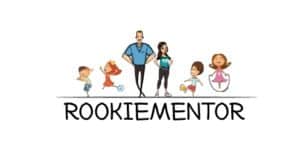So you’ve decided to embark on the journey of becoming a youth wrestling coach. Congratulations! There are few opportunities in life to make such an impact on young lives. Building strength and confidence, teaching discipline and determination, imparting life skills through the glory of competition.
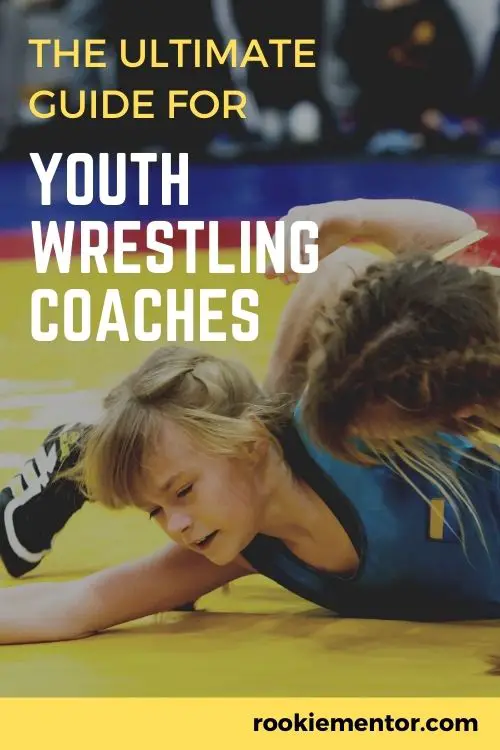
New youth wrestling coaches will firstly need to gain an appropriate license and membership, plus complete any school or organization requirements. Once complete, immerse yourself in the sport. Become an assistant coach, learn how to structure practice and the techniques used to motivate young athletes.
This guide is aimed to educate and support new youth wrestling coaches. If this sounds like you – welcome! It can be daunting to coach and mentor kids to participate in a sport you may have little experience with yourself. But do not fear, we are here to help you look like you’ve been a wrestling coach for years!
Do I Need a License to Begin Coaching Wrestling?
You do need to be certified to work as a youth wrestling coach. However, the steps are relatively simple and are as follows:
- Complete and submit a background check, and pass SafeSport training ($20)
- Purchase an Annual Wrestling Leader Membership with USA Wrestling ($40)
- Check with the school or organization you will be coaching with for further requirements
However, becoming a registered coach is simply the first step, there’s still a lot you need to learn to become a great coach.
Knowing how to structure practices, how to plan ahead in order to bring variety and novelty into your drill work, and being ready for some of the inevitable challenges that working with kids brings are all things you need to be ready for so you can hit the ground running and get off to a strong start.
Remember, from the moment you walk into the gym, you are coach. You are the one they’ll look to for leadership, support, and expertise, so you need to be ready from day 1.
That’s what we’re here for!
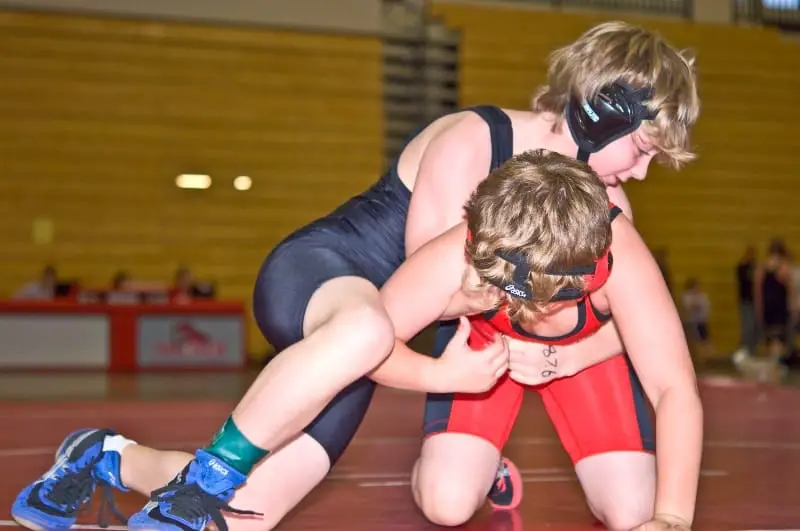
How to Gain Experience as a Wrestling Coach
If you’ve never wrestled or never coached before, it may be a good idea to get some hands-on experience before taking over a team of your own. Remember, these athletes will look to you from day 1, so you want to be ready as soon as you don the sacred (and figurative) whistle.
Here are some ideas for gaining experience and readying yourself to become a great coach!
Become an Assistant Coach
The best way to gain experience in any sport is by becoming an assistant coach.
You get firsthand experience, including working with young athletes in the exact context you’re looking for, but under the guidance of a more experienced coach. They can show you the ropes; teaching you how to work with your athletes, how they structure their practices (and why), and their coaching philosophies.
Attend Some Wrestling Practices
Not everyone has the time to become an assistant coach, which is understandable. Not to worry though. Just ask the coach of your local team if you can come check out some practices!
Coaches love coaching, good coaches at least. If you explain what you want to do, and why you want to do it, nine out of ten coaches will be happy to have you come check out a practice.
I used this method to great effect myself, even while I was just starting out as a coach, and was even able to shadow some D1 college practices.
It never hurts to ask!
Take an Online Course
Ah, the magic of the internet.
You can learn anything online these days, so why not take advantage? Honestly, I would recommend this option even for seasoned coaches.
You should never stop learning, and there’s no such thing as too much information for a coach. If it doesn’t work, just don’t use it. But there are some phenomenal online resources for everything from learning the basics to advanced technique, some of which are taught by Olympic-caliber wrestlers.
I mean, you’re kind of already on it by reading this article. So keep up the great work!
Here are some online wrestling coaching courses which are well worth a look from:
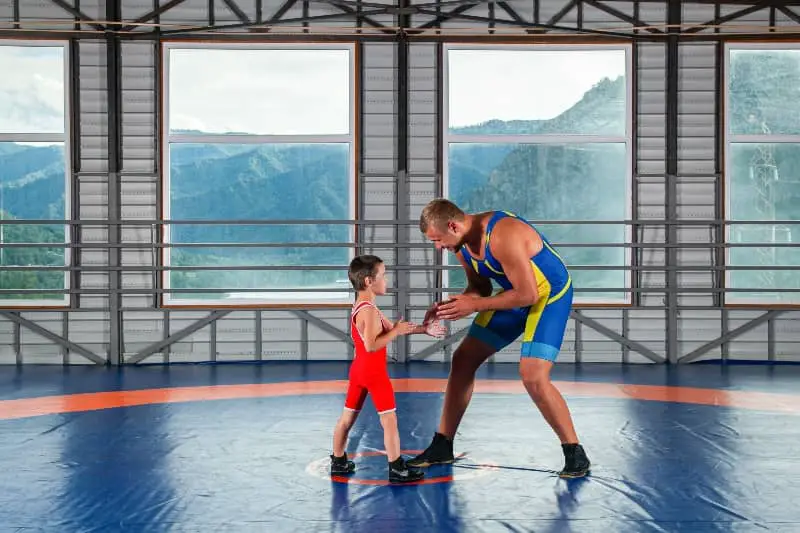
The Basics of Youth Wrestling
If you’re starting at ground zero, best to start here and build a strong foundation. No such thing as too much mastery of the fundamentals!
The Rules of Wrestling
To put things simply, the point of wrestling is to put your opponent on their back and keep him there, to pin them. This is how you win a match.
However, if there is no pin, the winner will be decided using a point system. There are five ways to score points in wrestling:
- Takedowns (2 points) – You earn two points for taking your opponent down to the mat and controlling them there.
- Escape (1 point) – If your opponent takes you to the mat, but you can get away or get to a neutral position (shoulders square) then you earn one point for an escape.
- Reversal (2 points) – You earn two points if your opponent takes you to the mat, but you are able to come from underneath and take control.
- Near Fall (2 or 3 points) – If you almost pin your opponent, but not quite, you can earn “near fall” points. You will earn two points if the near fall lasts two seconds, and three points if it lasts for five seconds.
- Penalty Points (1 or 2 points) – If one wrestler commits any rule infractions, their opponent will be awarded one or two points.
- For a full list of infractions check out Level Changer’s Penalty Chart
As a coach, you will also want to be familiar with the referee hand signals. Here is a very useful chart with the official hand signals of High School and College Wrestling (it will be the same in youth wrestling). But below is a handy video to show these signals in person.
How to Get a Job as a Wrestling Coach
Now that you’ve learned the basics and gotten some hands-on experience, it’s time to become a coach in your own right!
But how?
Start by leveraging any connections you have. Remember those coaches you shadowed? A personal recommendation goes a long way, and in the sports world everyone worth their salt knows at least one or two ADs or program managers who can help out.
If you don’t have any connections, don’t be dismayed! You just need to put yourself out there.
Google “wrestling teams in my area” and start reaching out to coaches and program managers. If there’s a big tournament, show up and just look to meet some people.
It may be uncomfortable at first, but if you’re curious and genuine you won’t make any enemies in the sports world.
You should also join any Facebook or networking groups for wrestling in your area. Every community has some kind of resource, and if you keep your ear to the street long enough something is going to pop up.
However, becoming a coach and becoming a great coach are two entirely different things. Securing a job as a wrestling coach doesn’t mean you’re at the end of the road.
Your journey has only just begun…
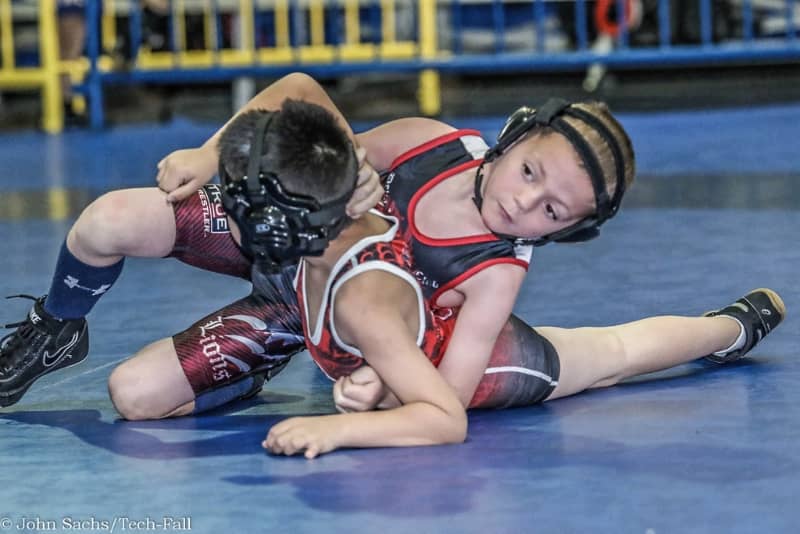
Connecting With Youth Wrestlers and Their Parents
Most new coaches’ first concern is what to do once the athletes get on the mat. However, I would argue the most important point in your coaching career takes place before you even hit the mats.
The first thing you need to do is connect with your athletes.
Remember, you’re a new coach. They don’t know anything about you, and you can’t expect them to simply trust and respect you just because you have the whistle. Respect is earned, whether by adults or kids. So how do you get off to a strong start and let them know what you’re all about?
Hold a team meeting.
Invite all of your athletes and their parents to join the first practice, and go over the rules, expectations, and goals for the season. Not only will this let your athletes know what you’re all about, it will bring the parents on to the same page and keep them in the loop.
Trust me, when coaching youth sports sometimes the most difficult thing isn’t actually the kids: it’s their parents.
By getting the parents involved early you’re letting them know the rules and expectations on your team, establishing your credibility and authority, and helping to make sure that what you say in practice is being reinforced at home!
So what should you talk about in this meeting?
1. Why We’re All Here
These meetings shouldn’t be a lecture. One way to get the parents and athletes engaged, and to understand their motivations behind joining the team, is to start with a breakout session.
Put them into groups with around 3 athletes and their parents, and have them discuss why they want to wrestle.
After about 10 minutes of discussion, bring it back to you and ask the different groups what they talked about.
You’ll find that while every family is different and has slightly different motivations for signing up, there are common themes underlying all of them.
They want their kids to learn discipline, build strength, character, and confidence, as well as interact with other kids.
The kids usually just want to wrestle.
2. Rules and Expectations
This is an essential step, especially in youth sports. Discipline is not a born trait, it must be developed by adherence to a set of rules. That being said, kids hate rules.
So how can you set rules and expectations that they’ll actually follow?
After 10+ years of coaching, here’s a tried and true method: Let them come up with the rules.
Sounds like chaos, but it works like a charm. Here’s what you do.
First, make an actual set of rules and expectations that you’ll want them to follow. This should include things like:
- Always be on time to practice, with your gear ready to go
- If you can’t come to practice, let us know ahead of time
- Respect your fellow athletes and competitors
- Listen to your coaches
- Maintain personal hygiene: no wrestling with rashes or skin lesions, and don’t come to practice if you feel sick
- If you ever have a question or something to say, feel free to ask coach
- Always give 100%, 100% of the time
HOWEVER, do not just list off your rules and regulations.
Give them 10 minutes and simply ask them, “What rules do you think are fair?”
Allow the athletes and parents to come up with the rules on their own. They’ll almost always get the essentials, like being on time and listening to coach.
If there is anything important they miss, personal hygiene for example, use questions to guide them there:
“Do you guys want to wrestle against someone who is sick?” “Why could it be a bad idea to come to practice with a rash?” “What do you think we should do to prevent this?”
By putting the power in their hands, allowing them to set the rules, it is significantly more likely they will follow them. Remember, they made the rules, you’re now just enforcing them. Even if you did a couple of Jedi mind tricks to make sure they made the right rules.
Also make sure that they have the correct gear, and inform of what to buy if they don’t have it already. The necessary gear consists of:
- Wrestling shoes (no regular shoes on the mat)
- A singlet or doublet
- Shorts and a shirt are fine for practice, but not for a match
- Headgear
- Mouthguard
- Knee pads
It’s essential for them to have the right gear, and will help the season get off to a smooth start.
[VIDEO] – Great introduction to a youth wrestling practice with 3-4 year olds.
3. What It Means To Be a Champion
Now it’s time to inspire them. It’s time to let the parents know that their kids have the right coach, that you’ll be guiding them on the right path, not only in wrestling but in life.
It’s time to talk about what makes a true champion.
Let them know that everybody will experience victory, and everybody will experience defeat. The difference between a champion and everyone else is not that they win more often than they lose, it’s how they react to both victory and especially defeat.
A champion is humble in victory. They know that anything can happen in competition, and are grateful that they won the day. But they also respect their opponent, and they know that the hardest thing to do is beat someone twice, so they double down on their training knowing that their opponent will do the same.
But defeat is what truly shapes a champion. The greats are unshaken by defeat. Sure, it tastes bad. Nobody likes to lose. But losing doesn’t make you a loser, quitting does. Champions hold on to that feeling of defeat, and they use it as motivation to train harder. Champions never give up.
Tell them the first step to becoming a champion, is to act like one. To be humble in victory, and to be gracious and curious in defeat. To always keep striving to get better, no matter what happens along the way.
To treat everyone with respect, especially those who have less strength or skill. Bullies are weak, champions use their strength to help others, to defend the weak, and help them to find strength.
If they do that, they’ll be champions.
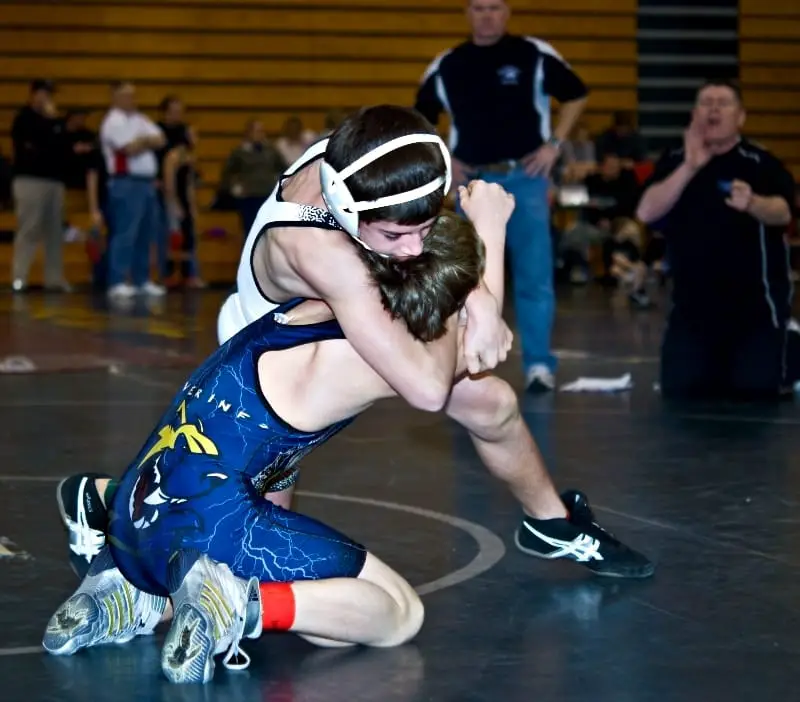
How to Structure a Youth Wrestling Practice
Now that you’ve set the stage, you need to deliver.
So what makes for a great wrestling practice?
I will give you the rough outline but deliberately leave room to try new things and get creative. The #1 rule for any youth sports practice: don’t make it boring.
Part 1: The Warmup
Never skip the warmup. This is where they stretch out, get the blood flowing, and get their bodies ready for practice. Skipping this will lead not only to decreased performance but injuries as well.
A good warmup will consist of the following:
- Jogging, or other light cardio
- Gymnastics such as cartwheels, round-offs, bear crawls
- Dynamic stretching: not static (holds)
- Leg and arm swings, Frankenstein walks
- Side-to-side groin stretches
- Lunges, high knees, and skips
- Sumo squats, duck walks
Once they’ve finished the warmup, it’s time to really get started!
Part 2: Drilling and Demonstration
Begin with some drills to set up the technique you’re going to be focusing on for the practice. For example, if you’re going to be working takedowns, start with some solo or partner takedown drills to get them ready for practicing the technique.
Here is BJJ coach Tom Barlow showing some solid solo takedown drills.
Once they have run through the drills, it’s time for the technique demonstration and practice.
This is where you really have to know your stuff.
If you have previous experience wrestling, great! If not, make sure you do your due diligence and research each technique thoroughly before trying to teach it.
Once the technique has been properly demonstrated, break the athletes into small groups of 4 or 5 to practice. 2 athletes will practice the technique, and the others can watch and give feedback.
Make sure you’re rotating around to each group and checking technique and feedback, to make sure it’s all correct.
Part 3: A Short Break
Remember, these are kids. While our goal is to shape them into Herculean athletes, they aren’t quite there yet.
They might need to pee.
This break should be short, only about 5 minutes, and afterwards make sure they take a lap or two around the gym to get the blood flowing again.
Part 4: Full Combat
The best way to get good at wrestling? Wrestle!
Every practice should have a bit of full combat. This is where they experiment using the techniques they’ve learned, build familiarity in some of the extremely uncomfortable wrestling positions, and get feedback on how seriously they’ve been taking training and conditioning.
Full combat tells no lies.
However, before letting them have at it, run through a more intense round of drilling.
These drills will usually be set-ups, take-downs, and various positional drills. You want to make them sweat a bit and tire them out to simulate true competition in practice.
Once you’ve run through another round of drilling, it’s time to go!
There are 3 different methods I like to use to keep this section of practice from getting repetitive.
1. Classic 1 on 1 Combat
Timed periods of wrestling from various starting positions. It’s a classic for a reason.
2. Positional Wrestling
Here, vary the positions a lot more. Start with a move you’ve practiced (maybe what you did in the technique phase) and let them fight it out from there.
3. The Crucible
My personal favorite. One wrestler will enter ‘The Crucible’ and 3 or 4 other wrestlers will rotate in against them, usually for about 1 minute each. Keeping fresh wrestlers on one tired wrestler will build toughness and resilience.
The kids should be exhausted at this point, which brings us to my favorite part of practice.
Part 5: Conditioning Finishers
Condition them hard while they are exhausted to finish out practice.
Remember, your attitude towards this will greatly impact their perception of it. This is the hardest part of practice, but one of the most important. Nine times out of ten, the more conditioned fighter wins.
And while we can’t control that one in ten move, we can always control our own conditioning.
So while you should be tough during this part, you should also aim to inspire them and get them excited for how difficult it is. Let them know that embracing challenges in life is what makes winners.
This is where champions are made!
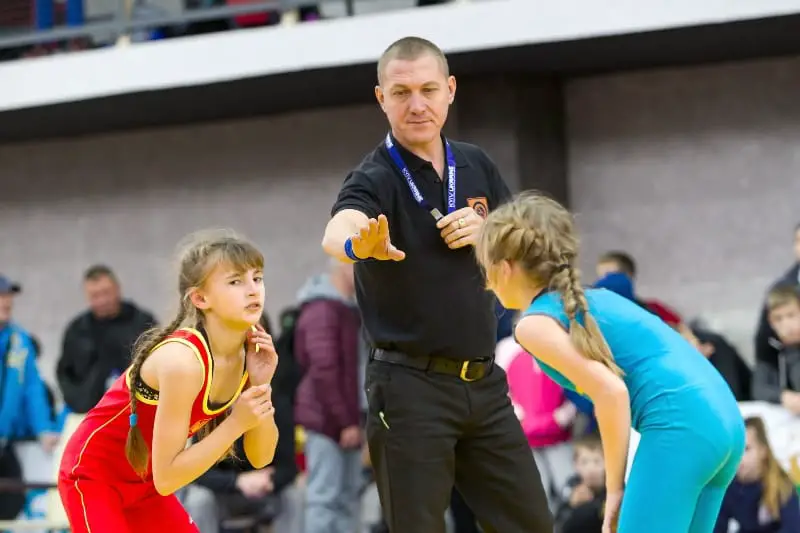
Next:
- What is the Best Sports Video Editing Software & Apps?
- Youth Sports Coaching Certification. What You Need To Know
Conclusion: Youth Wrestling Coaches Guide
Coaching youth sports can be one of the most rewarding experiences of your entire life.
The ability to impact kids; to instill values and character into young lives, to teach them lessons through the glory of competition, lessons they will carry with them for the rest of their lives. Nothing else compares to it.
All athletes have had a coach that changed our lives. Someone who saw something in us that nobody else saw, who pushed us harder than anyone else, but only because they saw a strength in us we didn’t see in ourselves.
This is your opportunity to be that coach.
Daniel
